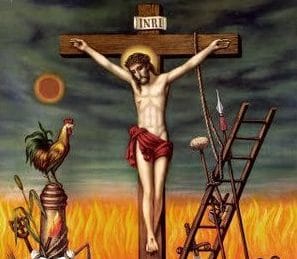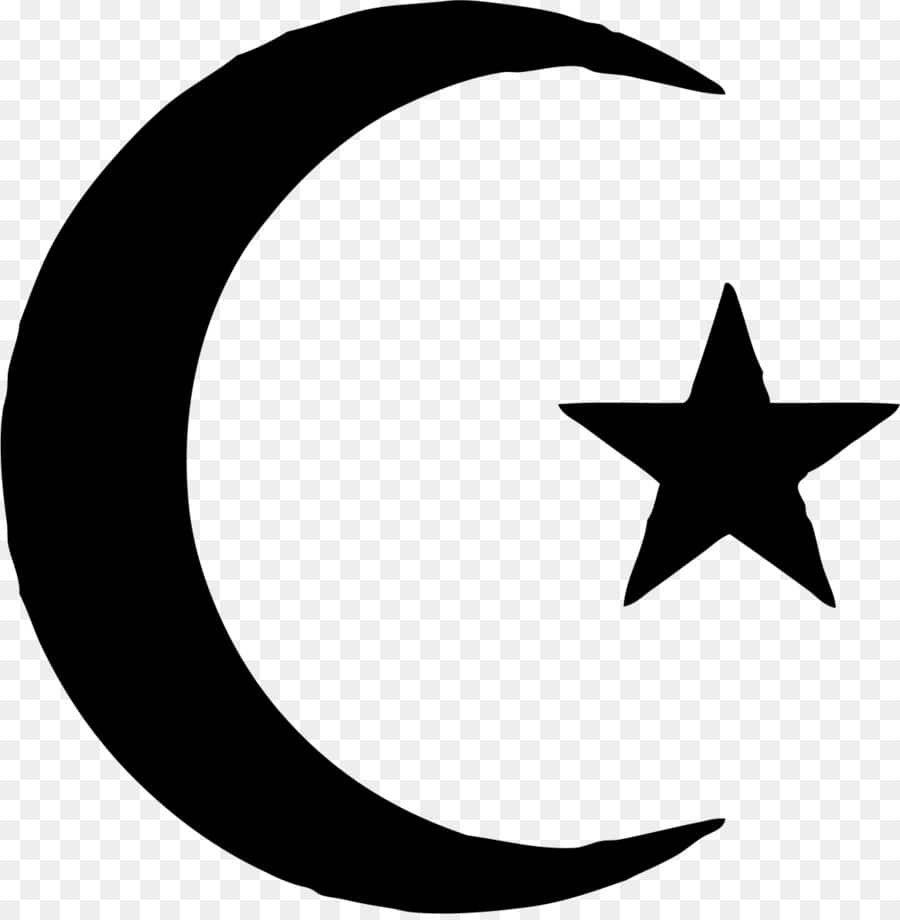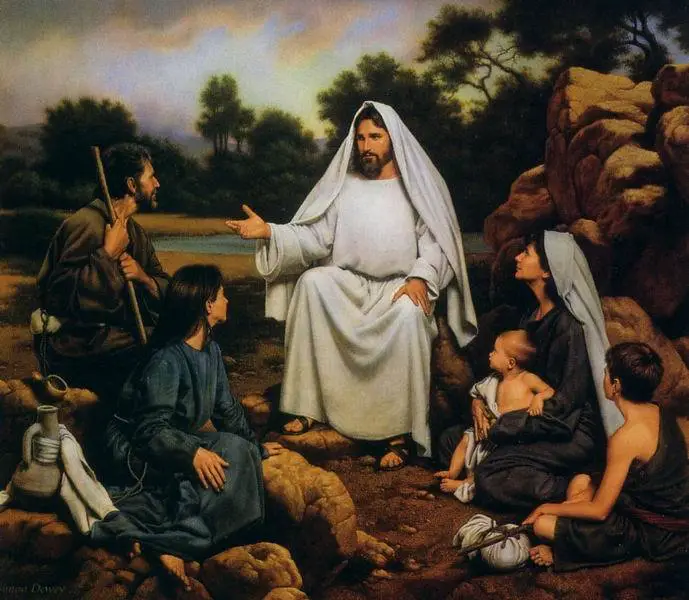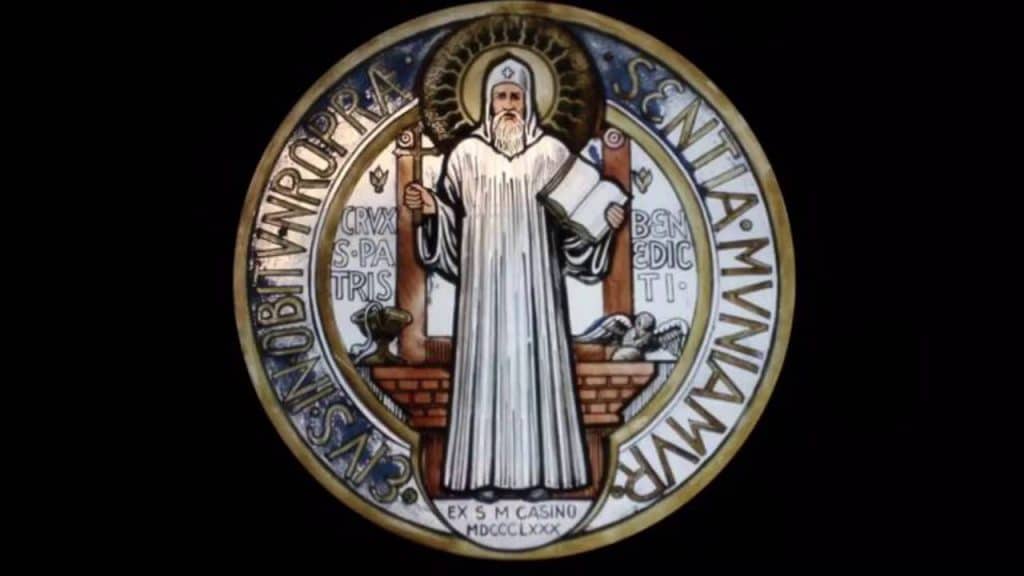Every day we see more and more followers of holy death tattoos, but do you really know the meaning of something that will stay on your body until the last day of your life?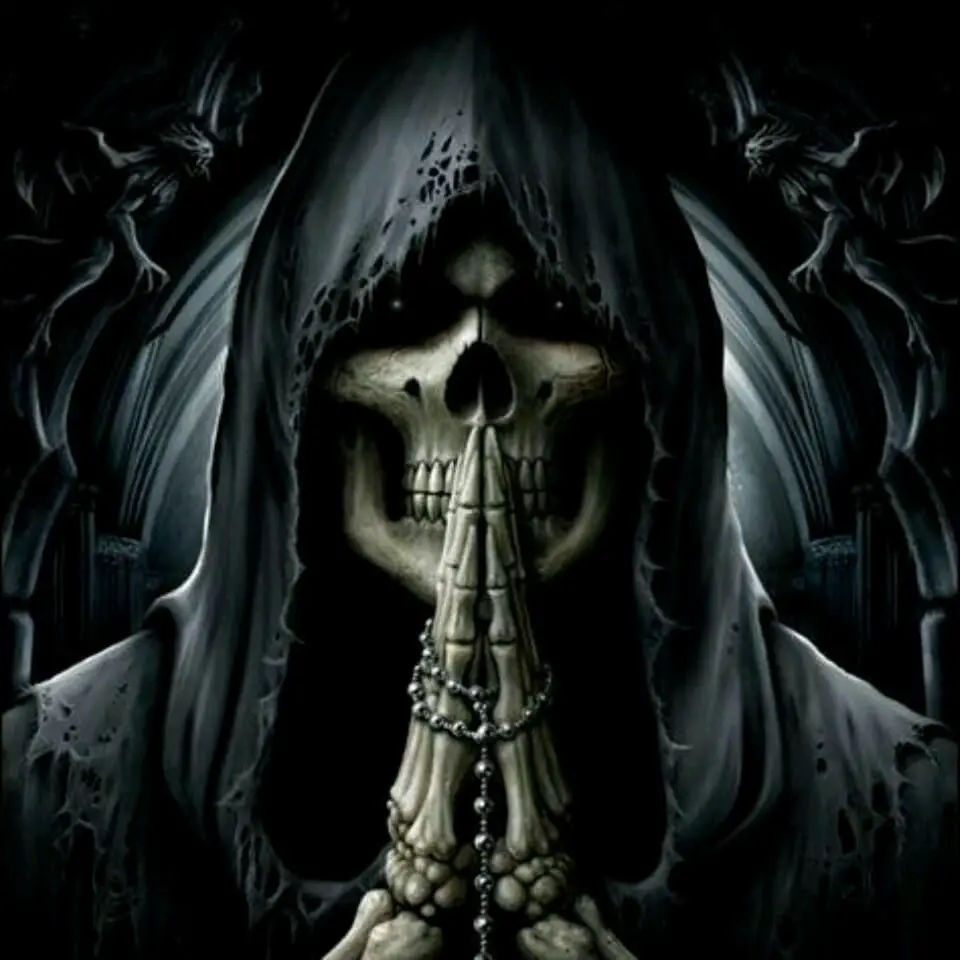
In the beginning, it was very easy to recognise the nationality of Mexicans if they had a tattoo of Santa Muerte on any part of their body, but nowadays this custom has become a transnational fashion, and in the same way that people of different nationalities perform the miraculous prayers of the Holy Death, they also mark their bodies with her image.
Santa Muerte tattoos and their meaning
Tattoos of Santa Muerte, literally the Holy Death, or Santa Muerte as they prefer to call it, are extremely popular among Mexicans. La Santa Muerte, also known as the Lady of the Shadows, White Lady, Black Lady, Santa Girl, La Flaca, Red Santa Muerte and more, is the beloved goddess of death whose origins date back to pre-Hispanic Mexico.

Holy death
The origins of the Santa Muerte myths are not entirely clear, but it is clear that the cult of Santa Muerte is a syncretism between Mesoamerican and Catholic beliefs.
Mexican culture has maintained a certain reverence for death since pre-Columbian times, as evidenced by the widespread Mexican celebration of the Day of the Dead. In Aztec and other cultures, death was personified in the form of human beings with half their flesh missing, symbolising the duality of life and death.
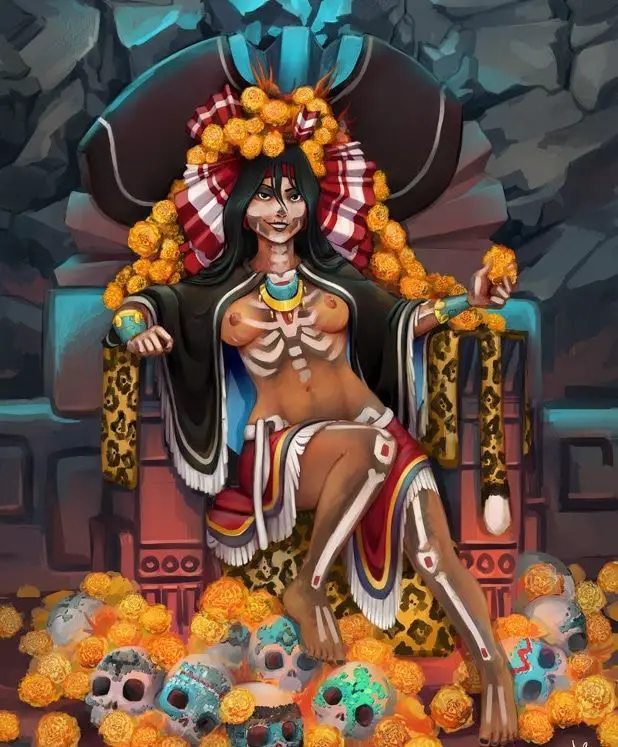
Mictecacihuatl protector of souls
Mictlan is the lowest and northernmost part of the Underworld, where, according to pre-Columbian Aztec religion, the souls of people who died of natural causes, i.e. old age, disease or other causes, reside.
Mictlan was ruled by a king, Mictlantecuhtli, which means Lord of the Underworld, and his wife, Mictecacihuatl, Lady of the Underworld.
This woman was not only the queen of Mictlan, but also the protector of the souls that resided in the dark underworld; in fact, some legends claim that she was the goddess in charge of the bones of the dead. She also presided over the ancient Festival of the Dead, which evolved from Aztec traditions into the modern Day of the Dead, originally a celebration at the end of July and beginning of August dedicated to children and the dead.
People who died of natural causes were buried with the goods they had taken with them on the long and dangerous journey to the underworld, and on their arrival in Mictlan these goods were offered to Mictlantecuhtli and his wife Mictecacihuatl; today, as then, many of the offerings are the same as those made to the sacred Death, on condition that she grants her favours.
After the Spanish conquest of the Aztec empire, the cult of death diminished but was never eradicated, and the Day of the Dead remained one of the most important Mexican festivals. In contrast to this day, the worship of death remained hidden until the 19th century because the Catholic Church labelled it a death cult and claimed it had links to Satanism. When it became known, the reaction was often harsh, with any images found being burned.
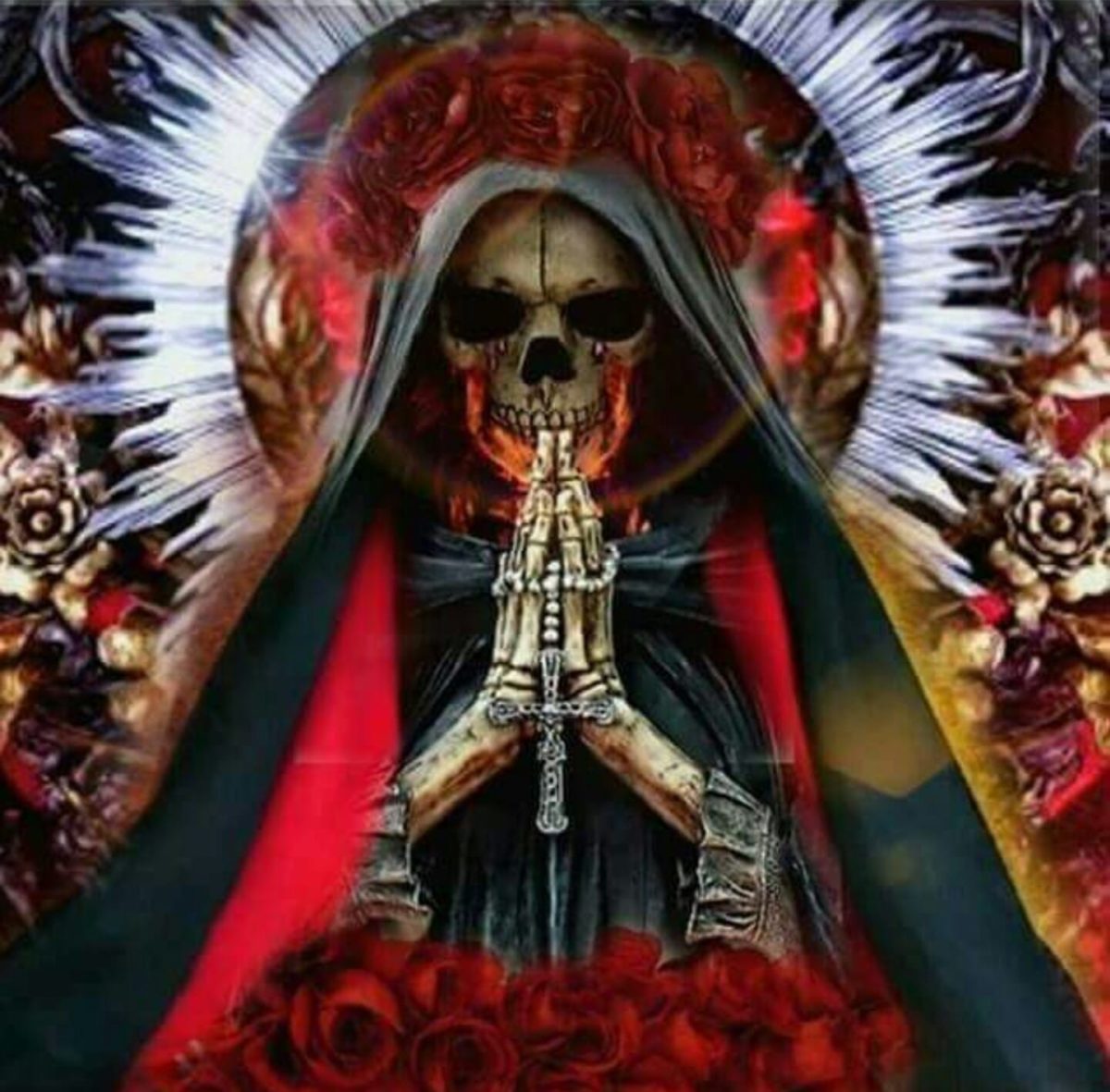
Holy death of the Mexicans
The religion of Santa Muerte was reborn in the mid-20th century, initially clandestine and closely associated with crime, but in recent decades its original adherents (such as thieves, pickpockets and street vendors) have merged with thousands of ordinary Mexican Catholics who, disillusioned with the rigid behaviour of the Catholic Church and its failure to reflect life in modern Mexican society, prefer to get tattoos of Santa Muerte instead of making rosaries to the Virgin Mary, because they feel more protected.
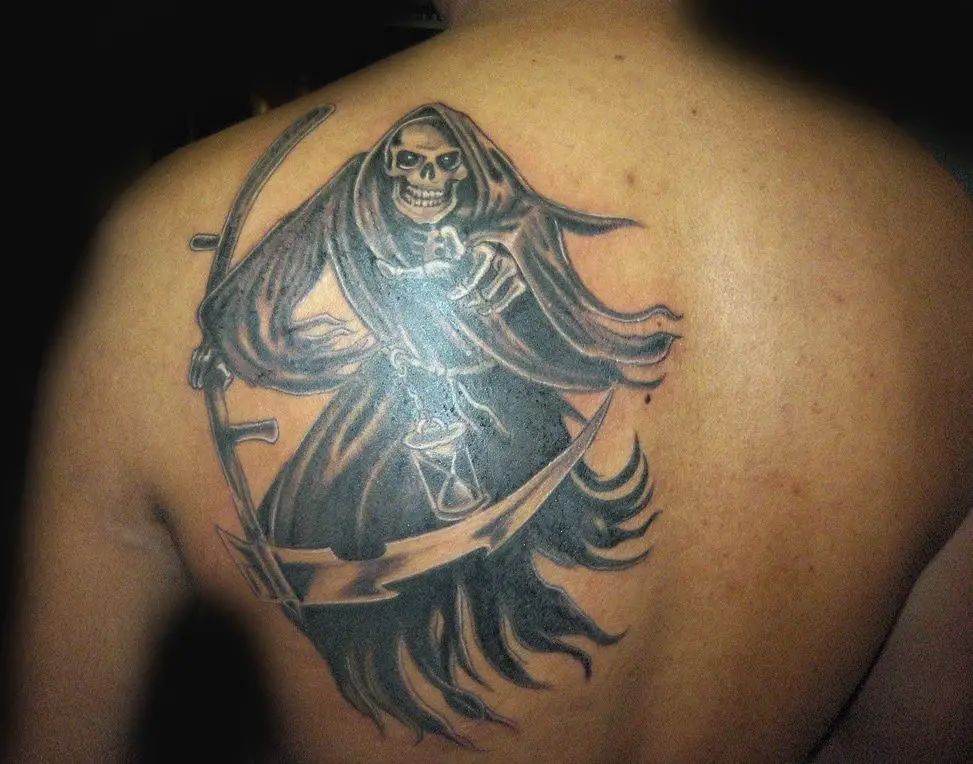
Tatuaje de santa muerte en las espalda
The cult of the Holy Death, which offers a spiritual way out of difficulties, has spread rapidly; the number of followers has grown to around two million, and the new religion has crossed borders, with many people getting Holy Death tattoos to show their devotion.
Although the Roman Catholic Church has on several occasions denounced the Cult of the Holy Death, claiming that it is part of black magic and that its followers and practitioners are devil worshippers, the faithful followers of the Holy Death have never renounced their Catholic faith and continue to pay homage to it by getting Holy Death tattoos.
In this video you can see the controversy between one side and the other, about the benignity and sanctity of practising the cult of the holy death.
Holy Death Tattoos For Women
The image of the Holy Death is not pleasant for many people, not because it lacks beauty, but because of the connotation it carries. For most people, death is not a pleasant subject because no one wants to die and because it also brings a lot of controversy.
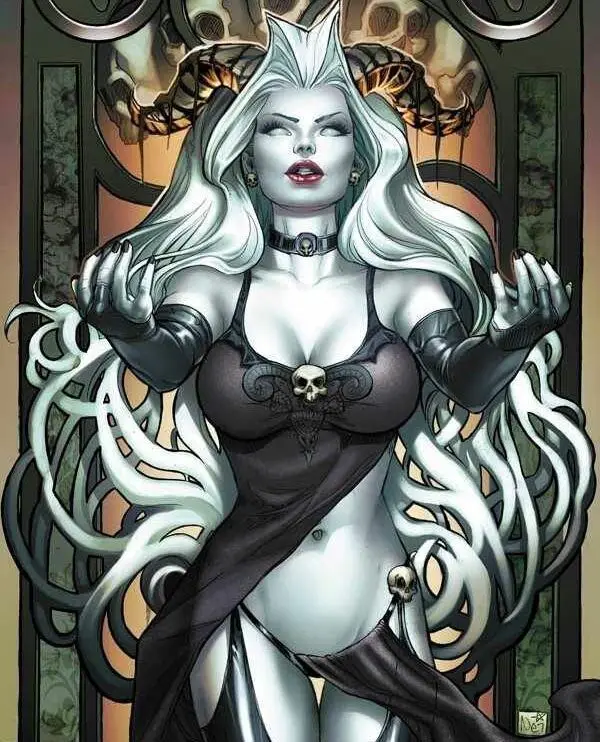
Holy sexy death
But when it comes to women’s Holy Death tattoos, things change, because even if it looks like the same tattoo, the meaning can be very different. If the saint is wearing a dress, it is undoubtedly a female tattoo, but if she is wearing the dress of the Virgin of Juquila, for example, this tattoo means devotion.
But if the Holy Death is dressed in a very sexy and suggestive way, this tattoo means that love belongs only to her, that is, to the Holy Death.
You can also see very aggressive holy death tattoos on women, and these tattoos are meant to be a warning sign because death is always present in them.
These holy death tattoos always carry an implicit sense of fatality or death in them, so those who have this type of art done on their bodies obviously do it to worship their saint, but they know that at any moment she herself can come looking for them to fulfil the maximum sacrifice she can offer, her own life.
Holy Death Wrist Tattoos
Unfortunately, even today in many parts of the world, tattoos are not well seen, which is why most people choose to get Holy Death tattoos on the wrists of their arms, where they can be hidden if they do not want them to be visible.
This is one of the most popular areas for women to get Saint Death tattoos; they can say many things about the woman who wears them, if she is peaceful, defiant, and she can even wear the miniature black Saint Death without anyone knowing.
Watch a step-by-step demonstration of a Holy Death tattoo on a girl’s leg.
Holy Death tattoos in colour
Holy Death tattoos carry an implicit sense of doom, given the characteristics of their image, but colour plays an important role in them. For example, the colour red in this type of tattoo carries a great charge of violence and danger, and those who choose this colour do so because they want to instil fear. Some people also associate this colour with protection, which is why a large number of death tattoos always have some of this colour, even if they are not entirely red.
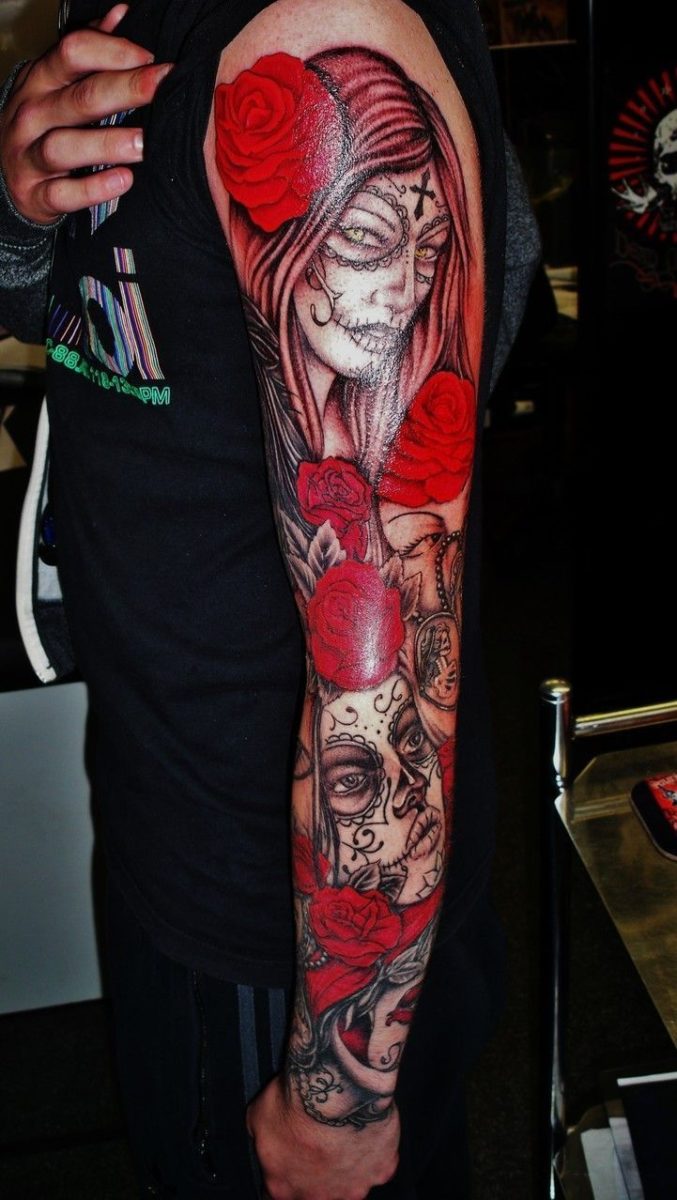
Holy Red Death
Sometimes this colour is also associated with passion, pleasure and vitality; in the case of the Holy Death tattoos, red is always accompanied by black, which represents firmness, dignity, power and stability, and in many cultures black is associated with evil.
Holy Death Tattoos With Wings
As we have already mentioned, Saint Death tattoos are used by people to pay tribute to their saint and for their protection in difficult moments.
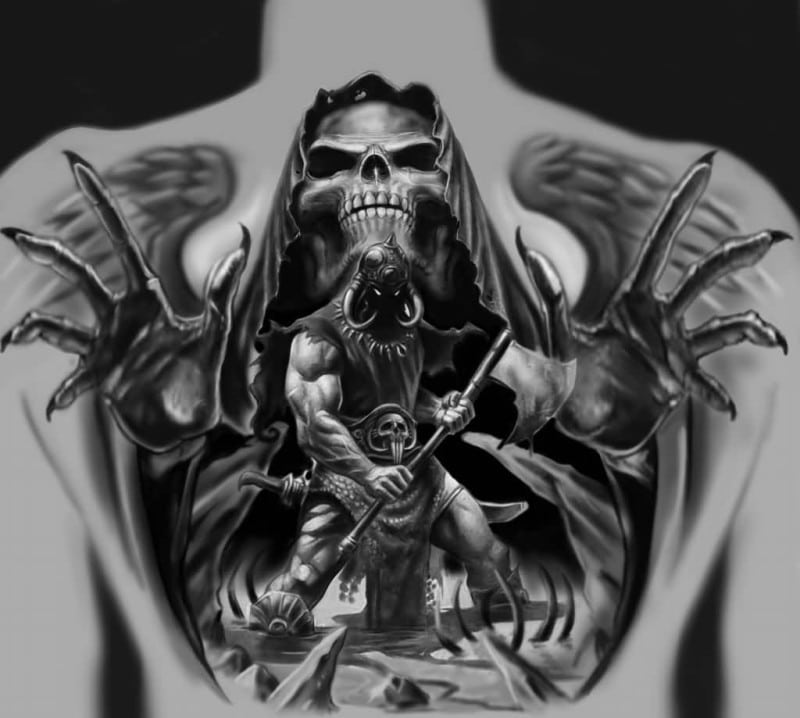
Tatuaje de la santa muerte con alas
The tattoos with wings are also meant to offer protection, but it has to be quick and omnipresent, because her wings allow the saint to be everywhere and at all times, according to her followers.
There are those who pray to the Virgin of Guadalupe to grant them favours in health and other matters; but when it comes to money, for example, people want the favours to come quickly, and that is where they ask for the Holy Death with wings, because she is quicker to grant favours.
It is the same with love, people are always in a hurry to get their loved one, either to arrive or to return if they have gone away. Since Death with Wings is most effective in these cases, many people use these tattoos to get her to grant them her favours as quickly as her wings allow.
Watch as a young man gets a tattoo of Winged Death on his calf to alert him to any attacks from behind.
Holy death tattoos with dogs
For many civilisations, dogs have been closely associated with humans, and it is therefore very common to see them depicted in human tattoos. When it comes to dogs and the sacred death, legend has it that when people die, they have a long road to travel, and sometimes it is a complicated one, with dangerous rivers to cross.
This is where man’s best friend comes in, because thanks to his help and that of the Holy Death, he is guided in the best way.

Holy death and dogs
According to Greek mythology, Cerberus, better known as Cancerberus, is a three-headed dog, the guardian of the gates of hell.
Some people have a firm belief that if they have one of these Holy Death tattoos in the company of a dog, on any part of their body, when they face that moment in their life when Holy Death comes looking for them, it will help them to cross any road they have to face; and if for some reason their destiny is hell, the dog that accompanies Holy Death can be congenial with Cancerberus to come to an agreement.
Holy Death Tattoos in Shadows
It is not only Santa Muerte tattoos with dogs that are used to intimidate the viewer, but also tattoos of this saint that are done in the shadows.
Santa Muerte is not necessarily associated with crime, but can be characterised as a spirit of defiance born out of the injustices perpetrated by crime on the one hand, and by government and law enforcement on the other. For this reason, when they use the prayer to the Virgin of Perpetual Help and do not have it, some prefer to tattoo the Holy Death in the shadows because, according to them, it allows them to go unnoticed by their enemies, be they the police or those on the edge of the law.
Watch this video to learn more about the Cerberus dog, the guardian of the gates of the underworld.
Saint Death Tattoos With Roses
Although roses are used by many men as a complement to Saint Death tattoos, they are more commonly seen on women as they represent true and honest love.
Roses signify the delicacy of women; a tattoo with this flower is meant to signify the admiration felt for a woman who can be a partner or even a mother.
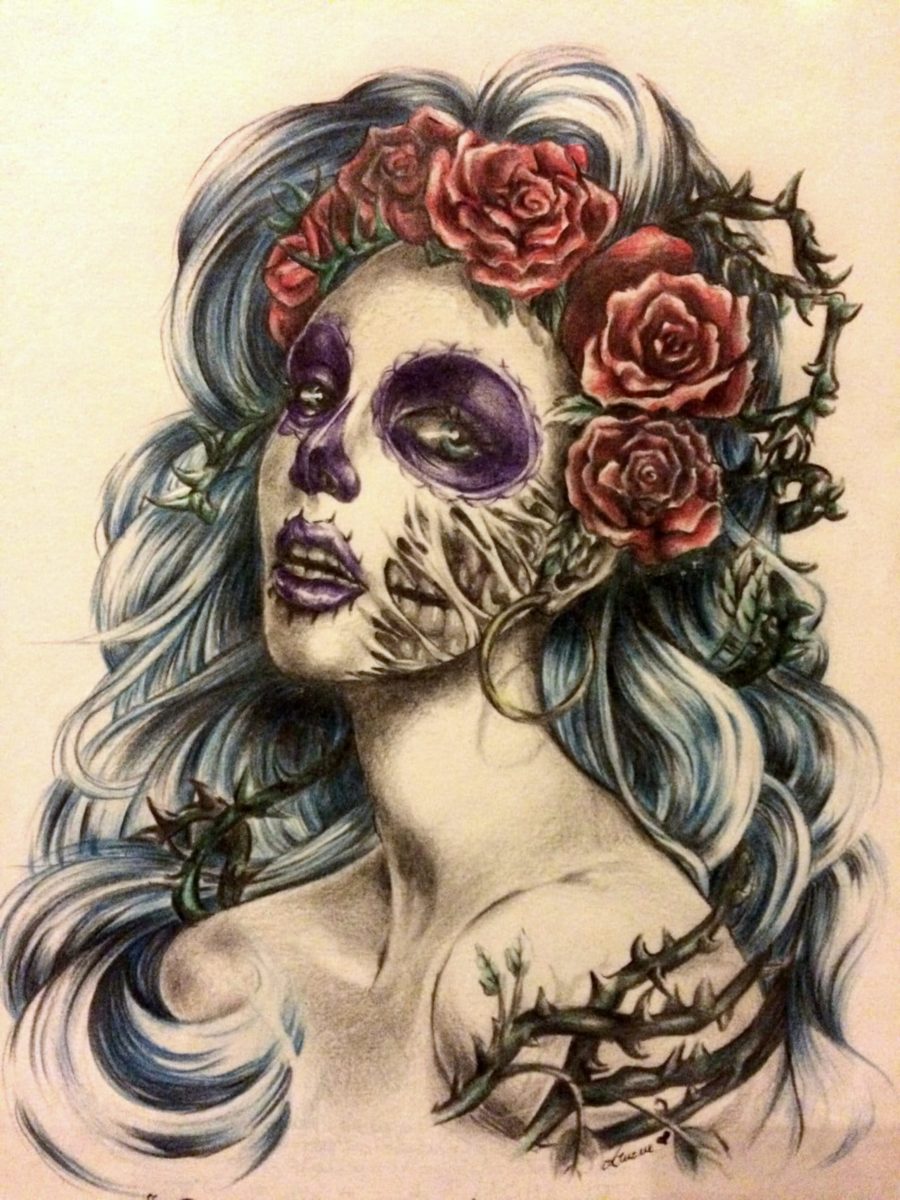
Holy death with roses
The Holy Death adorned with flowers on a lady indicates that although she can be hard, she can also succumb to the deepest emotion, love. But the colour of the rose must be taken into account, because often we can appreciate black roses with many thorns; and this is a sign to stop, because the person who wears it does not believe in love, and much less is willing to suffer for it. Its thorns, like those of the natural flower, are a sign to be careful.
Tattoos of the Holy Death in 3D
The people who use the tattoos of Santa Muerte, in many cases, as we have already mentioned, use them for their own protection, since they have a devotion very similar to that of the Catholic Peruvians to the Virgin of Chapi; however, most of them use them to intimidate those who know the meaning of the same. With this in mind, they prefer to have their Santa Muerte tattoos done in 3D to be even more intimidating.
See how some tattoo artists confuse reality with impressive 3D tattoos.
Holy Death Back Tattoos
To understand why some people prefer to get tattoos on their backs with the image of the Holy Death, we must first know what the cult of this image consists of, a Mexican culture that has crossed borders and now has millions of followers.
It is believed that this image is a saint who has much more power than St Anthony of Padua in his head, and is used to ask not only for love, but also for money, health, power and, above all, protection from enemies.
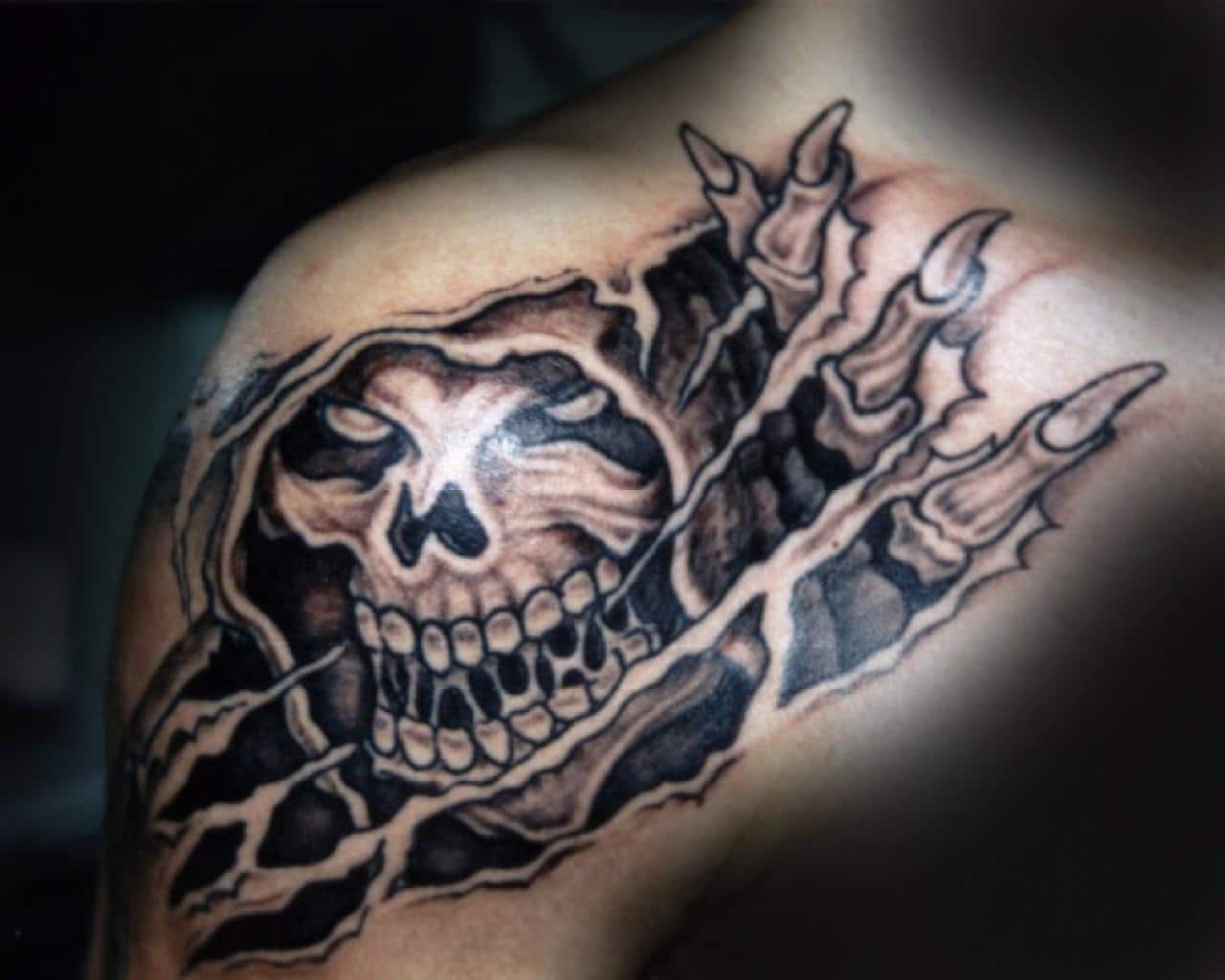
3D Santa Muerte on the back
According to the Mexicans, who pioneered the worship of the Holy Death, wearing the tattoos of Santa Muerte on their backs gives them the protection that they cannot perceive, but their saint can. Normally, sneaky enemies attack from behind, not in front, so they need to be protected at all times, and the Saint of Death provides that security.
Saint Death tattoos on the leg

Holy death in the calf
On other occasions, if the person already has their back covered, they will often resort to a Saint Death tattoo on the back of the leg, as they can see the danger coming from behind the wearer.
Although many Catholics pray to Saint Mark of Leon against their enemies, very few, if any, get a tattoo of this saint; on the contrary, this type of tattoo is reserved for the Holy Death, because they are the ones who can give them the protection they need.
In some cultures, the back of the person is associated with the past; for this reason, the followers of this belief worship the Holy Death by getting a tattoo in this area to let her know that she is their present and their past, and that she will always be at their side after their departure.
In this video you can see the process of getting a death tattoo on the back.
Holy Death Arm Tattoos
Maybe you are one of those people who think that getting a tattoo on the back of the wrist is the same as getting a tattoo on the ankle of a leg, but this is far from reality, and even more so when it comes to tattoos of the Holy Death; because it is not the same to talk about the Cathedral of Saint Paul as it is to talk about the Church in your community.
When a person gets a tattoo of Saint Death on his arm, it is because he asks her to be his guide in doing things; if he wants to take revenge, let her be the one to show him how to handle a flower, but if he wants to conquer love, let her be the one to show him how to handle a flower.
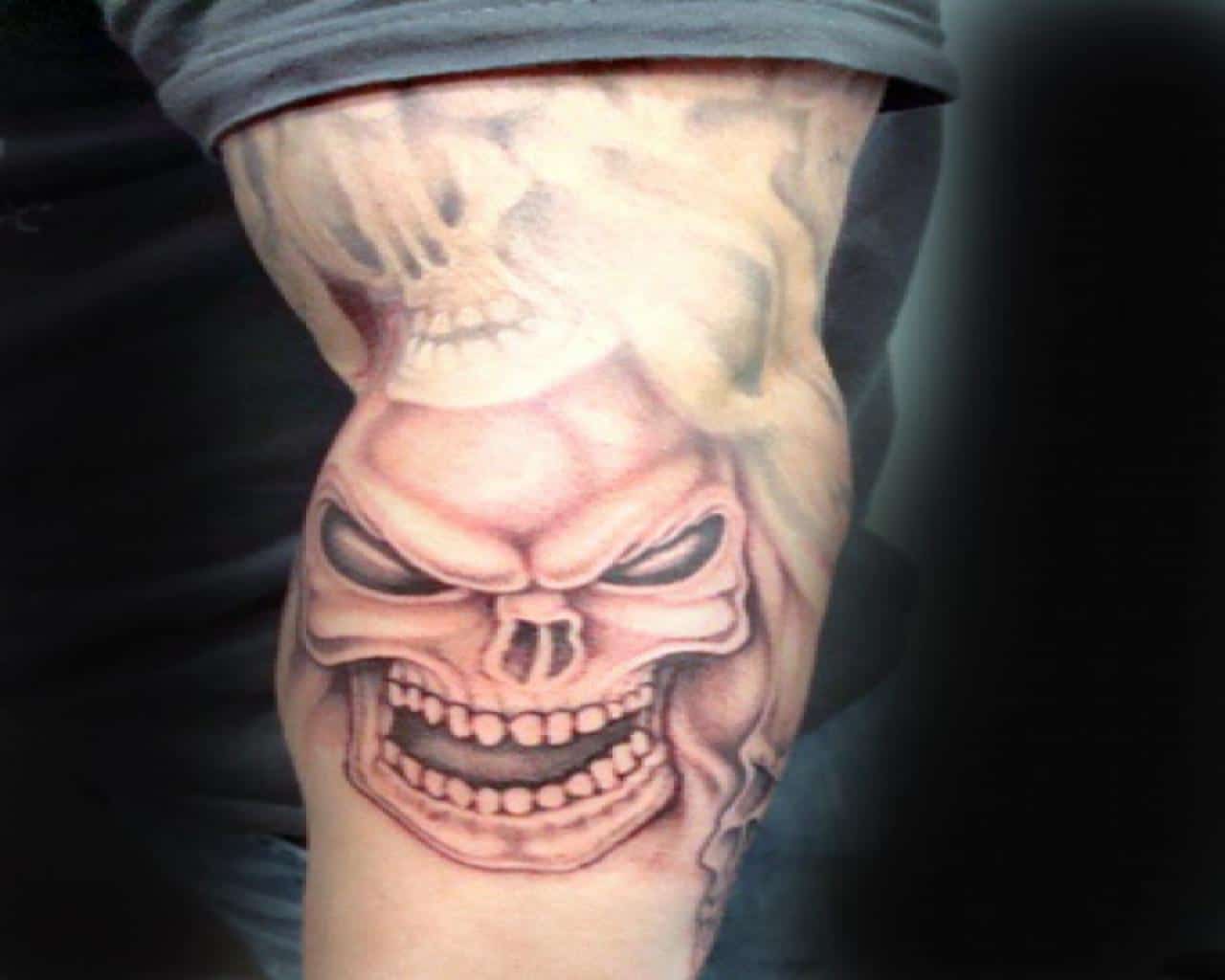
Holy death on the arm
People’s arms are useful for everything, that’s why most people use Saint Death tattoos because they think she can guide them in any action.
Forearm Saint Death Tattoos
Saint Death tattoos on the forearm are very common because this is a very versatile and eye-catching place, and contradictorily it can also cover it if necessary. In tattoo culture, the forearm is the preferred place to get tattoos because it can be used for a variety of tattoos and even create a story on the forearm.
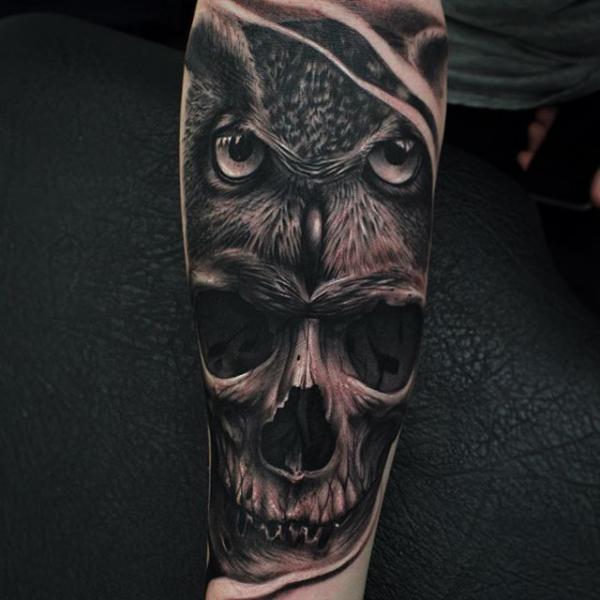
Santa muerte en antebrazo
One of the main holy death tattoos used in this area of the body are owls, as they represent their wisdom and the power to move in the shadows.
In the same way, according to experts, the owl tattooed with the Holy Death on the forearm also marks this bird as a messenger.
Tattoos of the Sitting Death
It is also very common to see tattoos of Saint Death sitting on her throne, representing her sovereignty over the person who wears it.
Sometimes they can be seen on the forearm of a lady, accompanied by an hourglass; this is due to the fact that the person who does not get an answer to his prayer to the Virgin of Sweet Waiting, trusts in the Holy Death, since this image with the clock represents the patience to wait for what the Holy Death can do for her faithful followers.
It is useful to clarify that the colour of the tattoo should be taken into account, as each of them has a different meaning, as you can see in this video.
Tattoos of the saint death on the foot
In the same way that the tattoo of the saint death on the arm works, it also works on people’s feet. Those who get this image stamped on their feet, besides worshipping the saint, also hope that she will guide each of their steps along the best path as far as health, money and love are concerned.

Santa muerte para el pie
Mexican Saint Death Tattoos
Although there are many people who associate Saint Death tattoos with violence, revenge and the dark arts, there are also people who believe in them for their health and things to do with love.
Tattoos on the feet are not exclusive to women, but they are the ones who most often use this area of the body to pay tribute to the Holy Death, as some consider it to be something sexy or sensual.
Holy death tattoos for men
Gentlemen, on the other hand, prefer to get Holy Death tattoos on other parts of their body, not as delicate as the ladies’, but more allegorical of violence, to try to intimidate their enemies.
However, although it is not so common to see delicate or delicate holy death tattoos, they are also used as guardian angels and for people suffering from terminal illnesses, to accompany them in their agony and make it more bearable.
As you can see in this video, there is a wide variety of tattoos for both men and women to choose from.
Black holy death tattoos on the hand
Tattoos of the black holy death on the hand have a very similar connotation to those on the arm, as those who use this type of tattoo ask for steadfastness in their pulse in whatever they have to do.
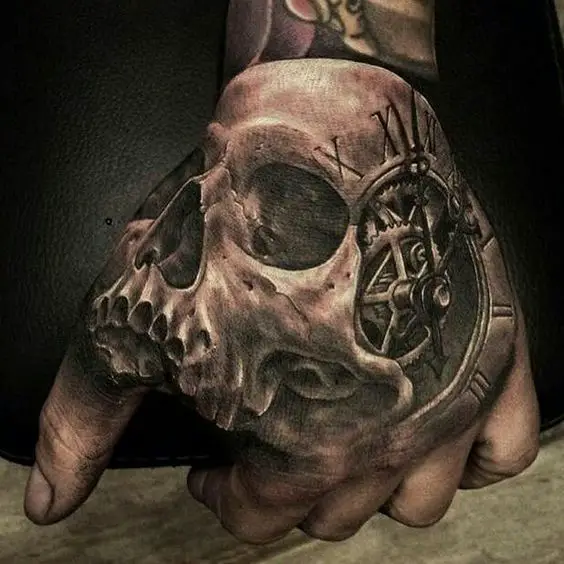
Holy death in the hand
As you can see in the picture on the left, sometimes the Holy Death is accompanied by a watch, which means that when the time comes to act, the Holy Death will not let you lose your pulse and you will be able to act in the best way.
Others claim that when the moment of departure comes, it is Holy Death who comes to look for the person and, taking them by the hand, accompanies them in trance to the afterlife.
Despite the fact that, according to experts, the hand is one of the most painful places to get a tattoo, due to the large number of nerve endings that humans have in it, there are countless people who have tattoos of Saint Death on them, either to intimidate, for protection, or to worship their saint.
Holy death tattoos on a horse
This is one of the most emblematic tattoos of the Holy Death, because it alludes to the horses of the Apocalypse, who carry this image on their body, because they come to bring justice or revenge by their own hand, with the help, according to them, of the Holy Death.
Holy death on horsebackIt is up to you to decide whether death is good or bad and what you want to use it for; it is also up to you to decide whether or not to get a tattoo to pay tribute to it. What we can suggest is that you think twice before getting a permanent tattoo on your body, because if you regret it tomorrow, the sessions to remove it are very expensive and the scars that remain are not very pleasing to the eye.
To give you a little more information, we leave you with this video where you can learn a little more about the cult of the holy death before making an irreversible decision.


